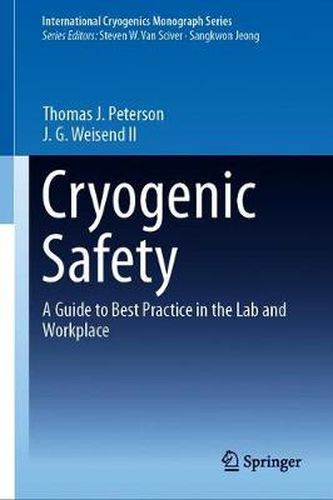Readings Newsletter
Become a Readings Member to make your shopping experience even easier.
Sign in or sign up for free!
You’re not far away from qualifying for FREE standard shipping within Australia
You’ve qualified for FREE standard shipping within Australia
The cart is loading…






This book describes the current state of the art in cryogenic safety best practice, helping the reader to work with cryogenic systems and materials safely. It brings together information from previous texts, industrial and laboratory safety polices, and recent research papers. Case studies, example problems, and an extensive list of references are included to add to the utility of the text.
It describes the unique safety hazards posed by cryogenics in all its guises, including issues associated with the extreme cold of cryogenics, the flammability of some cryogenic fluids, the displacement of oxygen by inert gases boiling off from cryogenic fluids, and the high pressures that can be formed during the volume expansion that occurs when a cryogenic fluid becomes a room temperature gas. A further chapter considers the challenges arising from the behavior of materials at cryogenic temperatures. Many materials are inappropriate for use in cryogenics and can fail, resulting in hazardous conditions. Despite these hazards, work at cryogenic temperatures can be performed safely.
The book also discusses broader safety issues such as hazard analysis, establishment of a safe work culture and lessons learned from cryogenic safety in accelerator labs. This book is designed to be useful to everyone affected by cryogenic hazards regardless of their expertise in cryogenics.
$9.00 standard shipping within Australia
FREE standard shipping within Australia for orders over $100.00
Express & International shipping calculated at checkout
This book describes the current state of the art in cryogenic safety best practice, helping the reader to work with cryogenic systems and materials safely. It brings together information from previous texts, industrial and laboratory safety polices, and recent research papers. Case studies, example problems, and an extensive list of references are included to add to the utility of the text.
It describes the unique safety hazards posed by cryogenics in all its guises, including issues associated with the extreme cold of cryogenics, the flammability of some cryogenic fluids, the displacement of oxygen by inert gases boiling off from cryogenic fluids, and the high pressures that can be formed during the volume expansion that occurs when a cryogenic fluid becomes a room temperature gas. A further chapter considers the challenges arising from the behavior of materials at cryogenic temperatures. Many materials are inappropriate for use in cryogenics and can fail, resulting in hazardous conditions. Despite these hazards, work at cryogenic temperatures can be performed safely.
The book also discusses broader safety issues such as hazard analysis, establishment of a safe work culture and lessons learned from cryogenic safety in accelerator labs. This book is designed to be useful to everyone affected by cryogenic hazards regardless of their expertise in cryogenics.